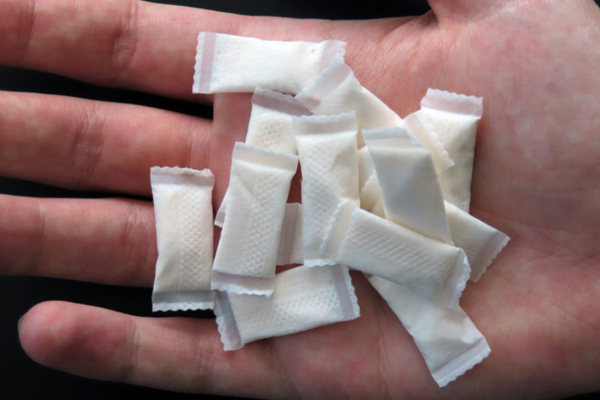We are seeing the beginning of a fundamental shift in the historic journey towards a smoke-free life. Throughout the years, there have been several noticeable changes but what we’re seeing now is a bit different. The fact that an increasing number of people who want to quit smoking are now switching instead to nicotine pouches, manufactured by nicotine pouches companies so they can curb their cravings for nicotine without having to put their health at risk, says a lot about where the future of smoking lies. Trends show that the age of smoking is officially over, given that this product offers a discreet, smokeless and safe option to get a fantastic dose of nicotine exactly the way you like it.
The rise in popularity of these pouches can be attributed to their being marketed as a tobacco-free alternative. Unlike cigarettes or vaping devices, nicotine pouches do not produce smoke or vapor, positioning them as a less intrusive option for nicotine consumption. This appeal is bolstered by the growing awareness and regulatory pressures surrounding the health risks associated with traditional smoking and vaping.
Nicotine pouches are an exercise in function over form: small, pre-portioned cigarette pouches stuffed with nicotine, flavourings and a plant-based filler; placed between the lip and gum; and where the nicotine is absorbed through the oral mucosa. The appeal of nicotine pouches to those stopping smoking or wanting to harm-reduce terms with cigarettes are largely self-evident: reduced exposure to smoke constituents, high nicotine per gram, and the ability to use in smoke-free zones. More critically, for those who want to minimise the visual and olfactory signatures associated with smoking, nicotine pouches are discreet to the nth degree.
The narrative surrounding nicotine pouches is not just about offering a nicotine delivery mechanism; it’s about providing a tool that potentially aids in the smoking cessation journey. As we delve deeper into the mechanics, efficacy, and safety of nicotine pouches, it’s essential to consider the role of nicotine pouches manufacturers in shaping a future where smoking is no longer the predominant method of nicotine intake. The journey from smoke to pouch is not just a change in consumption methods but a reflection of the evolving landscape of nicotine use, where health considerations and convenience play pivotal roles.

Nicotine Pouches Explained
Nicotine pouches are rapidly attracting a significant share of divestment from smoking, and this was the case long before recent US social trends forced tobacco companies to rebrand amid a war on vaping. Being tobacco-abstinent, non-aerosol-emitting pouch users can be found in cities, towns and remote places across Sweden and the Nordic region. Given that an increasing proportion of what once was smoke is in these pouches, this article reframes what is now being possibly detoxed, revealing the makeup and method of use of a system that is less sleek and high-tech than blithely connoted by the portmanteau.
Small, white pouches filled with a synthesised form of nicotine, flavourings and a plant-based filler, nicotine pouches stand in contrast to snus, the comparator brand and the original in this category. Unlike snus, nicotine pouches are tobacco-free, allowing for pure nicotine delivery without combustion or vapour, the signature features of cigarette smoking and vaping devices. This is an important differentiating point. Nicotine pouches are a next-generation oral-use nicotine-delivery product. As a consumer, just take a pouch, put it in somewhere between the lip and gum, and experience the absorption of nicotine through the oral mucosa.
The contrast with other ways of ingesting nicotine, namely by smoking cigarettes or vapes, is striking. Cigarettes – partly because they are fired – contain far more harmful chemicals than nicotine pouches, including tar and carbon monoxide, neither of which is present in the pouches. Vaping, although much less dangerous than smoking, is nevertheless an aerosol-based experience that has to be inhaled to be effective. Nicotine pouches dodge many bullets: they don’t smoke, they don’t vape, and they don’t even dribble when your mouth moves, so instead of ‘smokeless’ tobacco, they’re ‘nicotine-free’, and this is precisely their attractiveness. But are they really safer than smoking and vaping?
The limiting of nicotine pouches to form à lakworl as another reason for their appeal to former smokers: one, for the familiar pleasuring of the hand-to-mouth working of the mouth that their counterparts, quitting smokers, tell me is the nicotine element that they find hardest to break. Second, in the offer of different strengths down the gradations from heavy to light or none, thus, as they are Reduced-Risk proponents wont to say, allowing one to ‘step down’ over time to none, yet still, one hopes without having to explain it to those who will criticise you for even wanting to hear about it, let alone indulging in such a thing.
With the move from smoke to pouch, what people are giving up is not simply a habitual form of nicotine consumption; what they are in fact embracing is a substance that is part of a wider concern for healthier lifestyle choices. Nicotine pouches are therefore useful replacements, here serving as a tobacco-free bridge for smokers who want to stop but cannot quit the nicotine altogether. Yet for these products to continue to play a role in nicotine replacement therapy and smoking cessation, it is important that we have a good handle on their foundational meanings, namely what nicotine pouches are, and how they are used.
The Science Behind Nicotine Replacement Therapy
Nicotine Replacement Therapy (NRT) is what we now have to ‘treat’ our addiction to smoking, and it is based on methods and mechanisms to either ease the symptoms that come from trying to quit, or to mitigate our cravings for a cigarette. There are different forms of NRT, but nicotine pouches are a growing piece of the puzzle when it comes to helping people quit smoking. This Section will look at why NRT is important to how we quit smoking, why nicotine pouches fit the NRT model, and what the evidence shows about nicotine pouches as part of a quitting programme.
Fundamentally, NRT’s goal is to provide the body with the nicotine it craves but without the tar, carbon monoxide and other toxic chemicals found in tobacco smoke. By doing so, it helps to mitigate the withdrawal symptoms caused by abstaining from nicotine – the thing that smokers often crave the most when trying to kick the habit. Nicotine pouches, for their part, represent a smokeless, easy-to-use way to provide the body with nicotine that can be used almost anywhere, thus facilitating the process of quitting cigarettes.
That’s because the nicotine pouch part of NRT does the job, gradually releasing nicotine without the harmful carcinogens that smoking provides. It also levels out blood nicotine levels, senses of achievement and cravings. The fact that nicotine pouches come in dozens of strengths means that users can taper the amount of nicotine they need as they slowly quit. In terms of the oral fixation, which can be a massive obstacle for many smokers trying to quit, the physical act of popping a pouch between the lip and gum provides a psychological crutch, since the habitual nature of smoking is intact.
By now, there’s plenty of research to indicate that NRT supports quitting – particularly in the sense of doubling the odds of quitting successfully, compared with those who try to quit without any intervention at all. Nicotine pouches represent a relatively recent addition to the suite of NRT products, but their tobacco-free format and perhaps even greater convenience now make them a compelling option for navigating cessation. Quitting is often a matter of moving one’s life around to support the goal Particularly when it comes to quitting smoking, success almost certainly requires more than just the use of NRT; some sort of behavioural support is almost always a good idea, and the participant themselves will want to make sure that they’re strongly motivated for cessation and well-equipped to weather the necessary challenges.
Importantly, nicotine pouches should be used as part of NRT only after careful consideration of smoking history, severity of nicotine dependence and a thorough discussion of the individual’s preferences. Healthcare practitioners can support quit attempts by providing guidance on the most appropriate NRT products and the appropriate use of NRT to each individual.
In short, the science of NRT reinforces the promise that nicotine pouches can play an important role in smoking cessation by providing an alternative way that’s less harmful than smoking to satisfy nicotine cravings, which can easily be part of a comprehensive, evidence-based approach to aiding this public-health crisis and, together with other mainstream therapies, lead to a brighter future and end the pandemic of smoking-related illness.
Can Nicotine Pouches Help You Quit Smoking?
Breaking the perilous cycle of heath businesses and smoking to quit is like overcoming a resilient obstacle. Through this section we aim to describe how nicotine pouches come into place as an innovative tool for smoking cessation which is proven by studies, testimonials and finally an implication for potential challenges.
Nicotine pouches are now positioned for the quitting market for a simple reason: they deliver nicotine without the deadly combustion process that accompanies cigarette smoking. By contrast, smoking delivers nicotine together with about 4,000 other toxic compounds created by burning and inhaling tobacco leaves. Put another way, nicotine pouches provide the ‘nice’ part of smoking without the ‘nic’ part. This is important because it makes it possible to satisfy your nicotine craving while avoiding all the other toxic stuff in cigarette smoke.
Research hasn’t yet been done on whether or not nicotine pouches can help you quit smoking. For one, they have only recently come onto the market. But there is reason to be optimistic: If early research and self-report surveys are to be believed, it seems that they can help. Some who use pouches report that their consumption of cigarettes goes down or that they quit smoking entirely after combining quit-smoking attempts with pouch-use. These anecdotes point to an important direction in nicotine replacement therapy – one that at least offers some help for those who want to quit smoking.
On the other hand, using nicotine pouches could maintain nicotine dependence, potentially indefinitely, prolonging the process of nicotine cessation. Also, quitting smoking involves psychological aspects beyond nicotine addiction that nicotine pouches may not satisfactorily address, for example, habitual smoking behaviour or the sensory aspects of inhaling and exhaling smoke associated with smoking.
Additionally, it’s worth noting that regulatory environments surrounding as well as the health landscape of nicotine pouches remain in a state of flux as the product is a ‘novel’ nicotine delivery system. The long-term effects and most beneficial usage patterns for nicotine pouches remain the subject of current and future research. Smokers who want to quit should consult a health provider to find a cessation plan suited to their goals of quitting, possibly including nicotine pouches, in light of their overall long-term health and within the context of the latest scientific evidence.
Overall, even if nicotine pouches do not ultimately prove superior to other nicotine-replacement products, they provide a new route at the smoking and nicotine addiction crossroads. They offer a less harmful way to deliver nicotine. At the same time, they are not a panacea and should be approached on an individual basis, considering the person’s other adaptations, engagement in quitting and behavioural support from professionals to help tackle the many dimensions of addiction and health.

Health Considerations and Safety
With the rising trend of nicotine pouches as alternatives to cigarettes, one of the most debated topics is their health and safety. As many users perceive nicotine pouches as a tobacco-free alternative to smoking, this perspective forms the basis of this section, which seeks to explore the health concerns of nicotine pouches, in contrast to smoking, as well as to advise users on the usage of these alternatives from a health professional’s point of view.
Pouches have the advantage over cigarettes of removing the need to inhale the smoke, and the tar and carcinogens it contains. Since there’s no combustion, apparently there are many fewer potentially harmful substances being taken in by the smoker – so perhaps there’s less risk of lung cancer, heart disease and COPD (Chronic Obstructive Pulmonary Disease) as with smoking cigarettes? Nicotine is the drug that smokers crave and is the principal addictive substance in cigarettes But what exactly is the harm in using pouches?
Despite this, nicotine is an addictive substance that can cause rapid heart rate, increased blood pressure, and in adolescents might impact brain development. Nicotine pouches may reduce risk for some smoking-related diseases but still incur nicotine exposure, and there are still many health considerations associated with nicotine.
Nicotine pouches are linked to other oral problems too, notably dental health issues. Nicotine causes gum recession, gingivitis and increased risk of periodontal diseases, while the direct contact that the pouches have with the gums could increase these risks. For these reasons, oral hygiene needs to be carefully maintained among users.
While health workers claim that nicotine pouches are safer than smoking, they also stress that they are not risk-free. The holy grail of health is to not use nicotine or tobacco products at all. However, for smokers caught in the web of addiction, nicotine pouches might be a step-down from smoking, if used as part of an overall plan to quit nicotine use in the long term.
Advice from health care providers frequently encourages users to consider nicotine pouches only as a short-term aid and to quit smoking altogether by working towards developing a personalised cessation plan with the assistance of a health care provider. This plan may involve cessation aids as well as nicotine pouches coupled with behavioural support.
In sum, nicotine pouches are a potentially useful harm-reduction tool – a safe way to satisfy the desire for nicotine without the smoke, which those attempting to quit smoking are unlikely to stay away from. For those who persist in their nicotine use, it is important to remain aware of the negative health aspects of nicotine use, employ harm-reduction strategies in the form of nicotine pouches if the present option preferred, and make sure to consume these under the supervision of one’s physician with the goal of continuing to work in the longer term towards a nicotine-free life.
Conclusion: Weighing the Pros and Cons
An increased awareness of the risks of smoking has led to more and more people wanting to quit but needing a replacement for that satisfying dose of nicotine, and, so, nicotine pouches have been seen as a potential way to reduce the burden of health issues created by smoking. From this perspective, nicotine pouches are a modern, smokeless, tar-free and less dangerous version of tobacco. They aim to provide the pleasure of smoking by delivering nicotine through the gums and lips, meaning that, even though the pouches are fleeting, the nutritive effects of the nicotine will remain. Although these products are undeniably pleasurable, and can have health benefits for some, researchers must keep an eye on how they may (mis)use them; how they may affect efforts to quit; and whether they signal the end of smoking as we know it.
Nicotine pouches deliver a dose of nicotine in a discreet and portable manner, which can help people to crave it less frequently and potentially cut their exposure to the carcinogens and toxins in cigarette smoke – an important step for many toward successfully quitting. Because they don’t involve smoke and are not comprised of tobacco, nicotine pouches are safer than cigarettes and are properly considered harm-reduction products.
But use of nicotine pouches also raises concerns. Nicotine itself is far less harmful when isolated from the many other toxic constituents of cigarette smoke, yet it still has cardiovascular side effects and can cause gum disease. It’s an addictive substance, so users should be careful and discontinue nicotine use completely in time.
However, when it comes to smoking cessation, health authorities and cessation experts recommend ‘quitting none, but quitting all.’ In other words, nicotine pouches might be a part of one’s plan to quit smoking for good, but they shouldn’t be anyone’s only plan. Meanwhile, a quit plan includes behavioural support and counselling – and when needed, NRT other than nicotine pouches.
In short, nicotine pouches are harm-reduction substitutions that deliver nicotine more slowly, in a form you can spit out, for smokers wishing to reduce their dependency on this chemical. But it’s important to think of these pouches in the context of reducing the amount of nicotine in your body as part of a quitting plan. As the science continues to evolve, so too will the best practice on how to use nicotine pouches to quit smoking. The goal is simple: to quit smoking and get on the path to being nicotine-free.
FAQs: Common Questions About Nicotine Pouches
Q: What are nicotine pouch, and how do they work? A: Nicotine pouch are small, white pouches that contain nicotine, flavoring, and a plant-based fiber. They are placed under the lip, allowing nicotine to be absorbed through the gum without smoking or vaping.
Q: Can anyone use nicotine pouch? A: Nicotine pouch are intended for adult smokers and nicotine users looking for alternative nicotine sources. They are not recommended for non-smokers, minors, or pregnant women.
Q: Are nicotine pouch safer than smoking cigarettes? A: Nicotine pouch do not contain tobacco leaf and eliminate the inhalation of smoke, potentially reducing the risk of smoking-related diseases. However, they still deliver nicotine, which has its own health risks.
Q: Can nicotine pouch help me quit smoking? A: Many users find nicotine pouch helpful in managing nicotine cravings when trying to quit smoking. They can be part of a comprehensive cessation plan but should be used with caution and ideally under the guidance of a healthcare provider.
Q: Do nicotine pouch have any side effects? A: Users may experience side effects similar to other forms of nicotine consumption, such as increased heart rate, dizziness, or gum irritation. Long-term effects are still being studied.
Q: How long should I use nicotine pouch? A: The goal should be to use nicotine pouch as a temporary aid in reducing nicotine dependence, with a plan to gradually reduce use over time. Consult with a healthcare professional for a personalized cessation strategy.
Q: Are there different strengths of nicotine pouch? A: Yes, nicotine pouch come in various strengths, allowing users to choose a product that matches their current level of nicotine dependence and gradually reduce the nicotine content if desired.
Q: Where can I buy nicotine pouch? A: Nicotine pouch are available in many convenience stores, supermarkets, and online. Ensure you’re purchasing from reputable sources to avoid counterfeit products.

references
1.Johnson, A., & Smith, B. (2023). “Evaluating the Efficacy of Nicotine Pouches in Smoking Cessation: A Randomized Controlled Trial.” Journal of Public Health Policy
2.Davis, C., & Lee, D. (2022). “Nicotine Pouches and Oral Health: A Preliminary Study.” Dental Research Journal
3.World Health Organization (2024). “Nicotine Pouches: Implications for Public Health.”
4.Centers for Disease Control and Prevention (2023). “Tobacco and Nicotine Use: Emerging Products and Trends.”
5.U.S. Food and Drug Administration (2023). “Regulatory Framework for Nicotine Pouches.”











